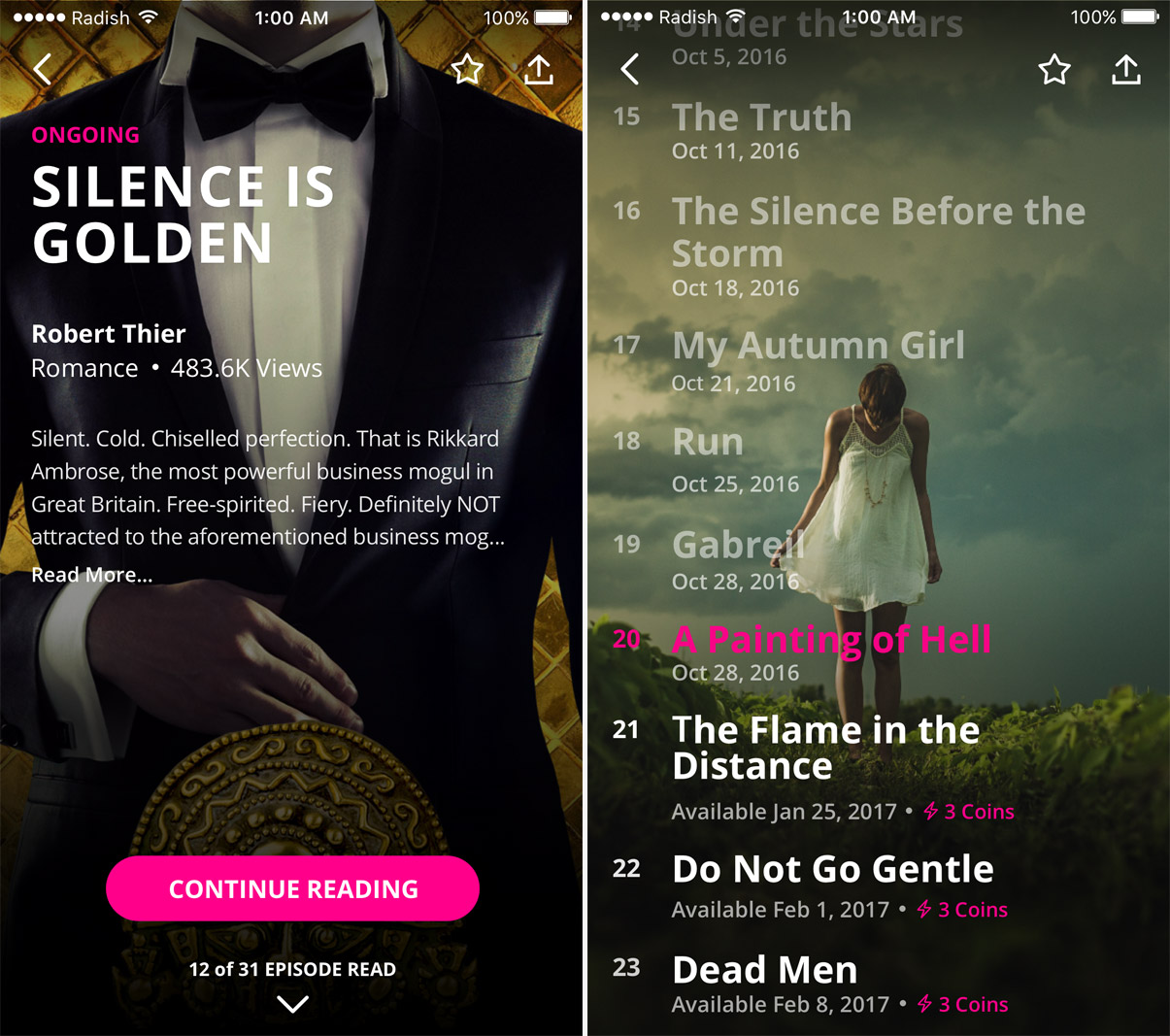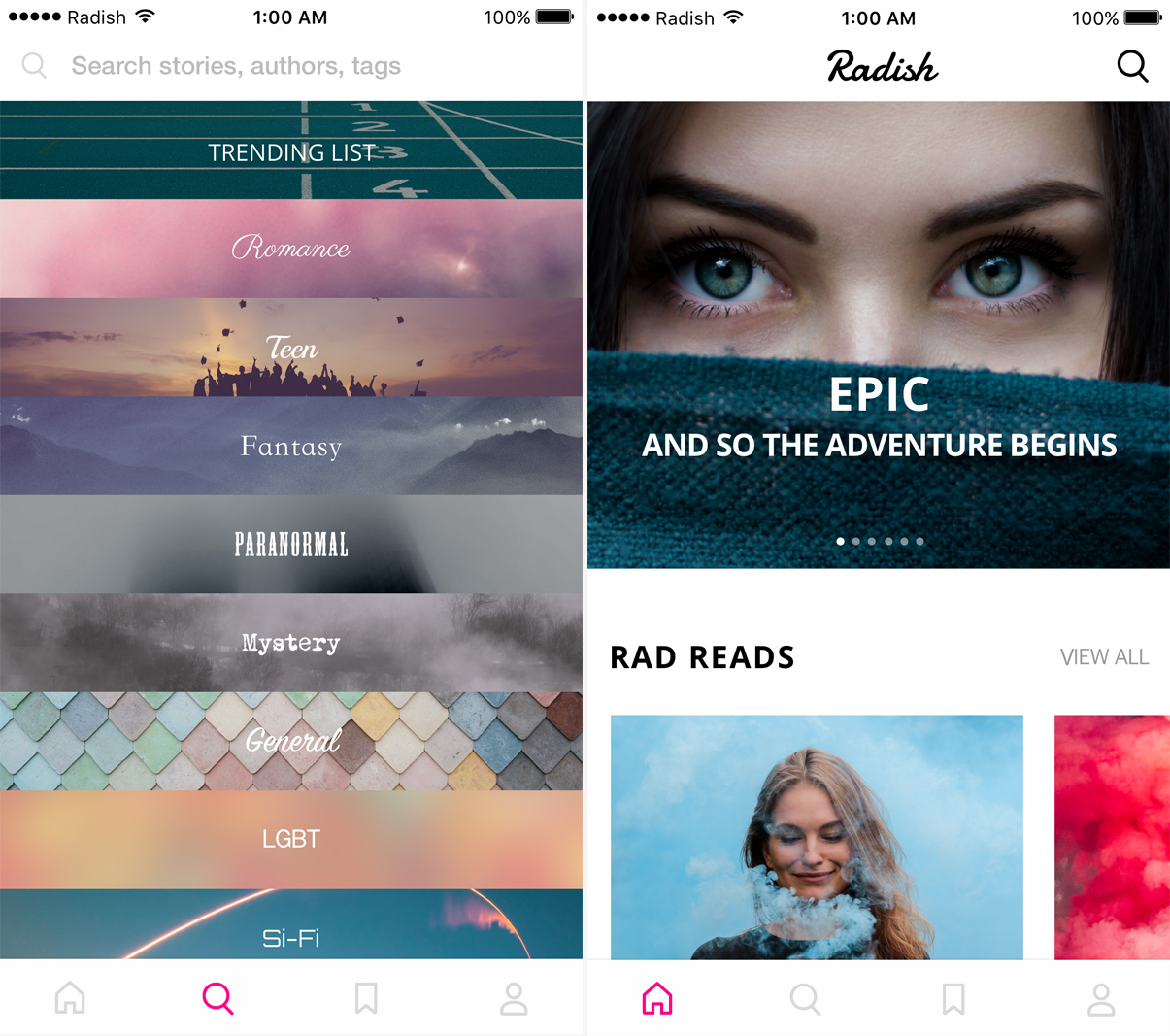Interview: Radish Fiction Founder, Seung Yoon Lee
A new model for publishing and a destination for lovers of serialized stories

As many writers know, it’s not easy to make money in the literary world. Sure, most industries need scribes and there are many writing-centric fields, but for aspiring fiction writers, the industry appears much as it did 100 years ago. Publishing, even with our internet and e-reader advancements, hasn’t really changed that much. Remarkably, Radish is trying to change that, and they’re doing so by calling on a method of the past: serialized storytelling. Radish is an app that acts as a doorway to content. Founder Seung Yoon ‘SY’ Lee has developed, in essence, his own publishing house. And in place of paperbacks or PDFs, Radish doubles as a platform. Content comes out chapter by chapter (and is sold in this way) and reader response matters along the way.

Born and raised in Seoul, Lee has educational and professional experiences that reach globally. From Oxford University to the entrepreneurs of San Francisco, he ventured with his idea to shift the parameters of publishing. With investors—and the support of Kairos, who chose Radish as one of the first fund investments—he recently resettled in New York City to secure more content. It was here that we spoke with him, intrigued by his dedication to exemplary fiction and the desire to compensate creators for their words. Lee embraces the idea that entertainment is a fundamental value to fiction writing. And with Radish, he’s making stories accessible while drawing in writers as well as readers.

How does Radish work for consumers?
We allow users to get access to great serialized fiction. There is a huge difference between serialized writing and normal book publishing. Serialized writing, at its core, is about interaction. It’s all about real-time writing. How our writers write an episode is a lot like a soap opera. You have an episode idea. You start writing. You get feedback. You write the next episode. You get feedback again. You write again. This form of writing was very, very popular in the Victorian era. Charles Dickens and many, many other great writers have written in this format. Media has always had a back to the future tendency.
Why is serial content relevant now?
Serialized fiction is coming back with our phones—and with the technology. You can now sell stories piece by piece because of mobile micropayments. That’s how Radish works. If you want access to the next chapter, you buy coins. You use coins to read, or even get early access to chapters. Our top writer, through this installment by installment micropayment monetization, is making about $15,000 per month. He is writing a fiction story that’s actually set in the Victorian age. It’s about an early feminist, who dresses up as a man, and gets hired as a secretary for a business mogul. It’s a story about going up the social ladder.

Where does the content come from?
I hustle my way around to find these writers. At the moment, we are doing tight quality control. It’s great to democratize publishing, but at the same time readers have limited leisure time. They want great content. We are not going with the YouTube model, more the Netflix model right now. We are a paid platform. We have a great team on acquisition. And continued success is determined through metrics—it’s data-driven.
How have you developed an audience, or brought readers to the platform?
At the moment we are focusing on acquiring great content—acquiring writers with a great following to come and write and get our branding and their distribution going. There are a lot of writers in the self-publishing world who have mastered the art of self-promotion through social media. They know how to go direct to consumers. They can bypass the publishers. They are the YouTubers of the publishing world. We have about 300K registered users a year in. Having these great digital talents writing on our platform, that’s it.

So where did the idea come from?
I had the benefit of seeing this movement take off in Asia. Serialized content is a very old concept, and one that’s already been reinvented for the digital age. I’ve seen it working in Japan. Back in 2005, people were reading stories in text message format. In Korea now, there are so many platforms that do webtunes—vertical comics rather than page by page—and serialized content written for the smartphone. In China, half the population is reading serialized content on mobile phones. It’s a nationwide phenomenon there. There is proof that this model works. In America already, “50 Shades of Grey” was fan fiction that was serialized on fanfiction.net. This is happening. We are taking all of this and putting it into a premium tier format.

But really, why try to change the model for publishing?
There are all these talks about VR, AR, voice recognition and 3D movies. What’s crazy about it is, stories are the building blocks of everything, all of this. You need great writers for all these things. It’s the most exciting field to be in. And the publishing industry is huge. It’s twice the size of music. But it’s not glamorous. We wanted to try to make a new business model or a new way to monetize, discover and consume content that’s written. It’s very exciting. There’s an opportunity here.
Images courtesy of Radish












